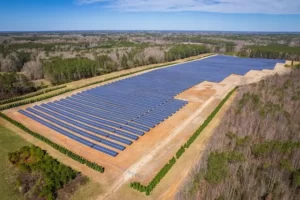Navigating the intricate landscape of solar regulations can be a challenging endeavour for both industry insiders and system owners alike. Understanding the nuances of guidelines governing solar additions, alterations, repairs, and upgrades is crucial for ensuring the longevity and effectiveness of solar installations.
By dissecting the essential principles delineated by the Clean Energy Council, this discussion aims to shed light on the critical aspects that underpin compliance in the realm of solar system maintenance and enhancements.
Stay tuned to uncover the key factors that influence decision-making processes and industry best practices in this ever-evolving field.
Key Takeaways
- Follow CEC guidelines for compliance and efficiency in all solar system work.
- Use CEC-approved hardware and adhere to industry standards for installations and repairs.
- Conduct performance testing and regular maintenance to ensure system longevity and efficiency.
- Distinguish between repairs, alterations, and upgrades while ensuring all work aligns with CEC regulations.
Standards for Solar System Additions
When considering standards for solar system additions, it is imperative to adhere to the latest installation guidelines and utilize hardware that is approved and listed by the Clean Energy Council (CEC).
Performance testing should be conducted to ensure the new additions meet the required efficiency levels. Additionally, a maintenance schedule must be established to upkeep the system’s performance over time.
It is crucial to follow the CEC’s guidelines for compliance and to guarantee the longevity and effectiveness of the solar system. Regular performance evaluations and adherence to maintenance protocols will help optimize the system’s output and ensure its sustainability.
Requirements for Solar System Alterations
Ensuring compliance with the Clean Energy Council’s installation guidelines is paramount when undertaking solar system alterations to maintain system integrity and performance. When making alterations to a solar system, specific requirements and regulations must be followed to ensure safety and efficiency. Below is a table outlining key considerations for solar system alterations:
| Requirement | Description | Regulations |
|---|---|---|
| System Capacity | Ensure alterations do not exceed the original system’s capacity limits | CEC guidelines must be followed |
| Component Compatibility | New components must be compatible with existing system hardware | Use only approved CEC listed hardware |
| Electrical Safety | Alterations must adhere to all electrical safety standards | Compliance with local electrical regulations |
| System Performance | Changes should not compromise the overall performance of the solar system | Follow CEC guidelines for maintaining system efficiency |
Guidelines for Solar System Repairs
With a focus on maintaining system integrity and performance, adherence to specific guidelines is crucial when undertaking repairs on solar systems. When considering repairs, the repair process efficiency and common repair challenges play significant roles. Here are some key points to consider:
- Ensuring that the repair process is carried out efficiently to minimize system downtime.
- Identifying and addressing common repair challenges such as faulty wiring or damaged panels promptly.
- Using high-quality replacement parts that are compatible with the existing system.
- Conducting thorough testing post-repair to validate system functionality.
- Seeking professional assistance if the repair tasks are complex or require specialized knowledge.
Compliance With CEC Document
Adherence to the guidelines outlined in the CEC document is essential when conducting repairs, upgrades, additions, or alterations to solar systems in order to ensure compliance with industry standards and regulations. CEC compliance ensures that any modifications made to the solar system meet the industry updates and specifications set forth by the Clean Energy Council.
It is crucial to refer to the CEC document for detailed instructions on how to bring the system up to the latest installation standards and ensure that any added hardware is on the approved CEC list. Failing to comply with the caveats in the CEC document may result in non-alignment with industry regulations, potentially leading to system inefficiencies or safety hazards.
Regularly checking the CEC guidelines for updates is recommended to stay current with industry best practices.
Classification of Work for Solar Systems
Regularly assessing the classification of work for solar systems is crucial for ensuring compliance with industry standards and regulations. Proper work categorization ensures that system maintenance and equipment compatibility are maintained. Here are some key points to consider:
- Differentiating between repairs and alterations based on changes to the inverter’s location.
- Ensuring that any added hardware aligns with approved industry standards.
- Evaluating the need for system upgrades to meet the latest installation requirements.
- Understanding that replacing components may fall under repairs or alterations depending on the scope.
- Complying with specific caveats outlined in the CEC document to guarantee adherence to regulations and standards.
Installation Guidelines by CEC
The Installation Guidelines provided by the Clean Energy Council (CEC) offer comprehensive instructions for the proper implementation of solar projects, ensuring adherence to industry standards and regulatory requirements. These CEC guidelines serve as a crucial reference for maintaining installation standards, specifying the approved hardware list, and outlining compliance measures detailed within the document.
Installers are encouraged to refer to the 700 KB document for specific requirements when undertaking repairs, upgrades, additions, or alterations to solar systems. By following the CEC guidelines diligently, installers can guarantee that the solar projects meet the necessary installation standards, thereby enhancing the overall quality and safety of the system installations.
Related Articles on Solar Systems
Within the realm of solar systems, a critical aspect to consider is the impact of adding a second system and the potential for claiming rebates associated with such installations. When delving into related articles on solar systems, several key topics emerge:
- Solar system warranties: Understanding the implications of warranties on both the original and newly added systems.
- Solar system performance: Analyzing the combined performance of multiple systems and any impact on overall efficiency.
- Installer responsibility: Determining warranty coverage when a non-original installer works on the system.
- Feed-in tariff considerations: Exploring how upgrading the solar system can affect premium feed-in tariff rates.
- Product comparisons: Evaluating different monitoring systems and solar panels to make informed purchasing decisions.
Frequently Asked Questions
Can I Upgrade My Solar System Without Affecting My Current Feed-In Tariff Rate?
Upgrading a solar system while maintaining the current feed-in tariff rate requires adherence to regulations governing system adjustments. Ensuring system efficiency post-upgrade is vital to preserve tariff benefits. Compliance with relevant guidelines is essential.
Is It Possible to Combine Multiple Solar Systems Into One for Better Efficiency?
Integrating multiple solar systems can optimize efficiency, enhance performance, and potentially save costs. Careful planning, compliance with standards, and utilizing approved hardware are essential. Consider the complexities of system integration for the best outcome.
What Are the Implications of Adding Battery Storage to an Existing Solar System?
Integrating battery storage into an existing solar system can enhance energy self-sufficiency and efficiency. Considerations include battery performance metrics like capacity and discharge rates, as well as seamless energy storage integration with the current solar setup for optimal functionality.
How Can I Ensure That My Solar System Remains Covered Under Warranty After Repairs or Upgrades?
To ensure warranty coverage post-repairs/upgrades, adhere to manufacturer’s guidelines, use approved components, and engage authorized installers. Confirm compliance with CEC standards to maintain system performance and warranty validity. Regular maintenance enhances system longevity.
Are There Any Restrictions on the Size or Capacity of Solar System Additions or Alterations in Residential Areas?
Size restrictions and capacity limits for solar system additions or alterations in residential areas vary based on local regulations and utility guidelines. Compliance with these specifications is crucial to ensure the system’s efficiency and safety.
Conclusion
In conclusion, adherence to the regulations and guidelines set forth by the Clean Energy Council is essential for maintaining the efficiency and safety of solar systems. By following the standards for additions, alterations, repairs, and upgrades, industry professionals and system owners can ensure compliance with industry best practices.
Understanding the classification of work and installation guidelines outlined by the CEC is crucial for the proper maintenance and enhancement of solar systems.



